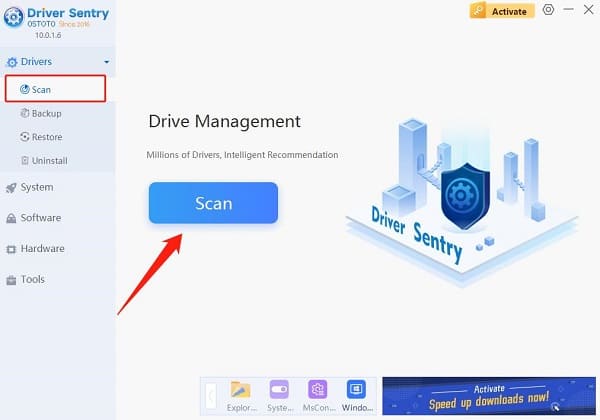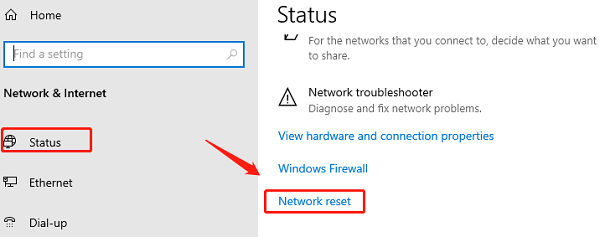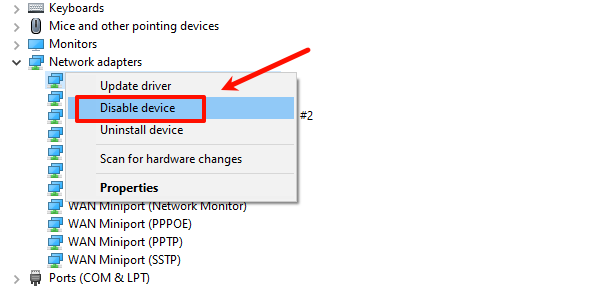
Network connection issues are common and often caused by problems with the network adapter. Resetting the adapter is a quick and effective solution to restore a stable internet connection.
1. What is a Network Adapter
A network adapter is a crucial hardware component that allows your computer to communicate with the router or other network devices. Whether using a wired or wireless network, the network adapter is essential for data transmission. When it malfunctions, you may experience issues like being unable to connect to the internet or slower network speeds.
2. How to Improve Network Stability
Drivers are essential software that ensures proper communication between your devices and the operating system. Regularly updating drivers can enhance network stability and performance. It is recommended to use Driver Sentry to automatically detect and update drivers, saving you time and avoiding the risk of downloading or installing incorrect drivers.
Click the download button to get the latest version of Driver Sentry, install and open the software, and click "Scan".

After the scan, you will see a list of drivers that need installation or updating. Locate the network adapter driver and click "Update".
Once the update is complete, it's recommended to restart your computer to ensure the new drivers take effect.
3. Why Reset the Network Adapter
Resetting the network adapter can be a solution when you encounter the following network issues:
Unable to connect to Wi-Fi or Ethernet.
Unstable network connection with intermittent disconnections.
Computer displays "No Network Access" or other network error messages.
Significantly reduced network speed.
Resetting the network adapter clears the network configuration, reinitializes network settings, and resolves network issues, helping to restore your network connection to normal.
4. Steps to Reset the Network Adapter
Through Windows Settings
Press Win + I to open Windows Settings, then click on the "Network & Internet" option.
In the left menu, click "Status", scroll down to find the "Network Reset" option, and click on it.

In the pop-up dialog, click "Reset Now". The system will prompt you to restart your computer.
After completing the network reset, your computer will automatically restart, and you will need to reconnect to Wi-Fi or Ethernet.
Using Command Prompt
Type "cmd" in the search bar, right-click on "Command Prompt", and select "Run as administrator".
In the command prompt, type the following commands and press Enter after each: netsh winsock reset

Then type: netsh int ip reset
After completing the commands, restart your computer to apply the changes.
Using Device Manager
Press Win + X and select "Device Manager".
Expand the "Network Adapters" option, find your network adapter device, right-click on it, and choose "Disable device".

Wait a few seconds, right-click the adapter again, and select "Enable device".
5. Post-Reset Considerations
After resetting, you'll need to manually reconnect to Wi-Fi or wired networks.
All saved Wi-Fi networks and passwords will be cleared, so you'll need to re-enter passwords.
Custom network settings (like static IPs or DNS) may revert to default. Reconfigure them as needed after the reset.
6. How to Avoid Network Adapter Issues
Outdated drivers are a common cause of network adapter issues. Use professional driver update tools like Driver Sentry to keep your network adapter drivers up to date.
If network adapter problems occur frequently, it may indicate hardware failure. Regularly check cables, routers, and other devices for proper operation.
System junk and cache can affect network performance. Use system optimization tools to clean your system regularly.
By following these steps, you can significantly improve the stability of your computer's network connection and avoid network problems from affecting your daily work or entertainment. If issues persist, consider reaching out to technical support for further assistance.
See also:
7 Ways to Maximize GPU Performance
How to Fix Wireless Mouse Connection Failure